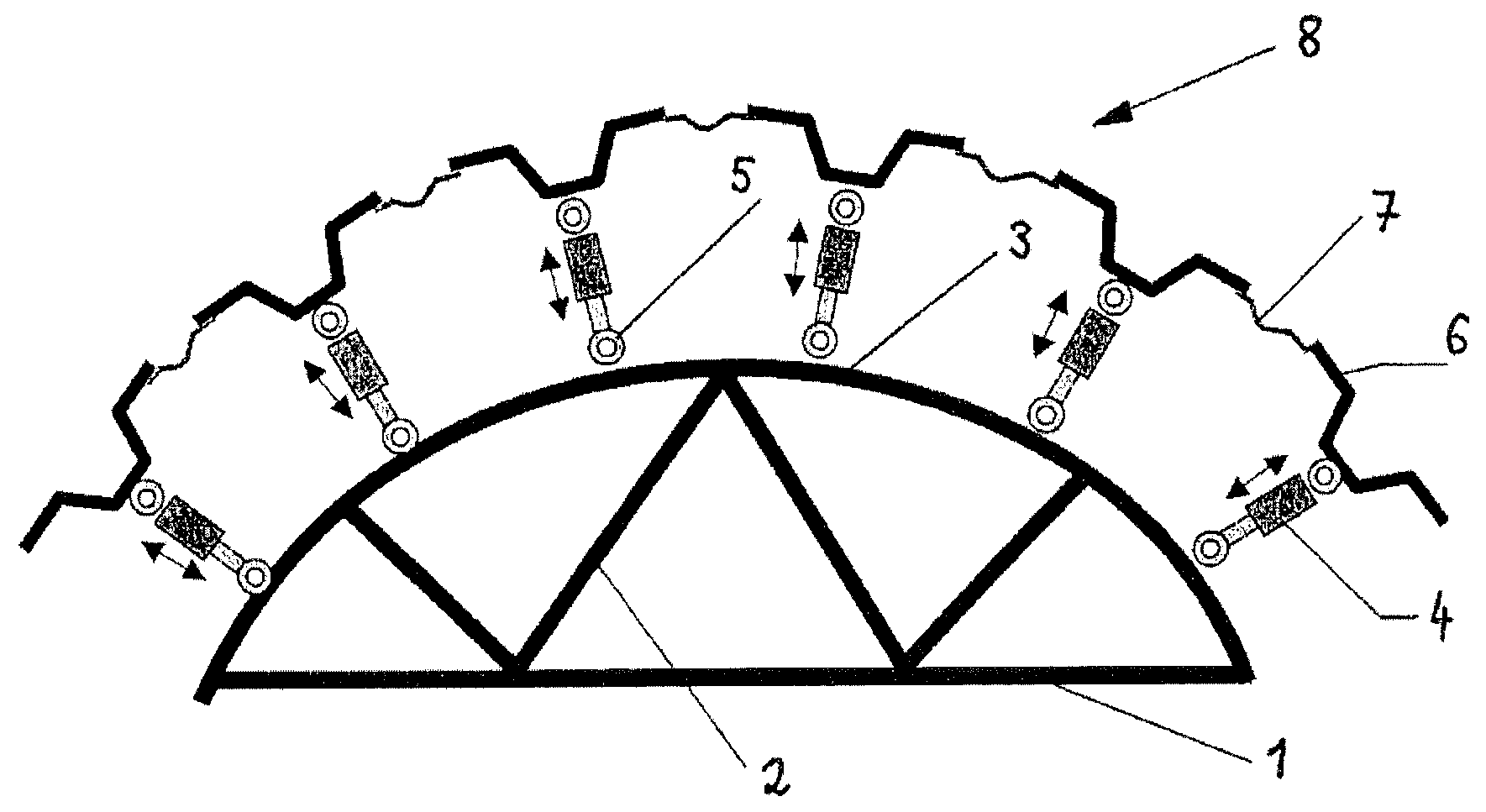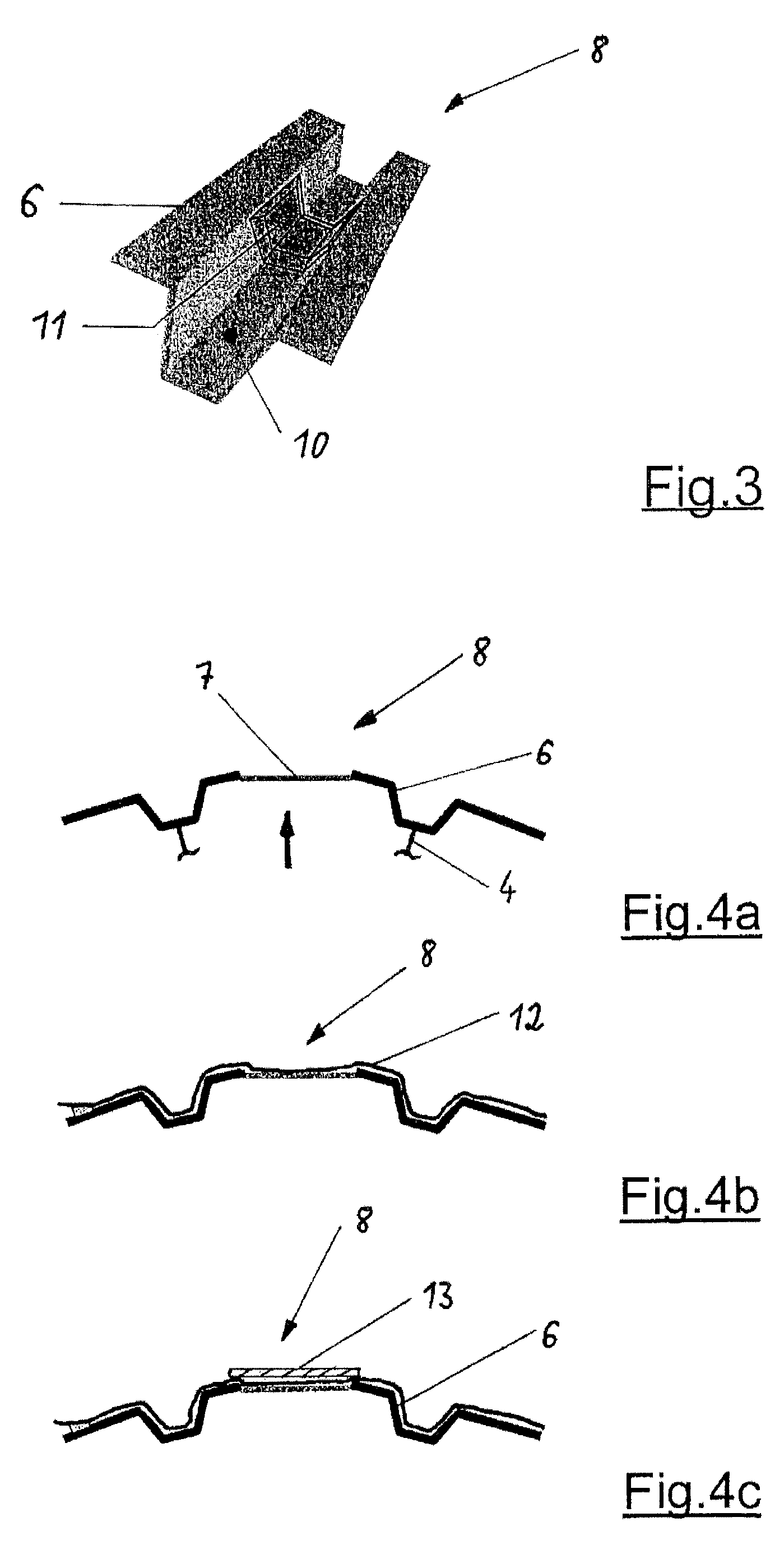Device and method for manufacturing a fiber-reinforced composite fuselage shell for an aircraft
a composite fuselage shell and fiber-reinforced technology, applied in the direction of domestic articles, sustainable transportation, other domestic articles, etc., can solve the problems of excessive pressing and achieve the effect of reliable and simple manufacturing
- Summary
- Abstract
- Description
- Claims
- Application Information
AI Technical Summary
Benefits of technology
Problems solved by technology
Method used
Image
Examples
Embodiment Construction
[0037]According to FIG. 1 a rigging device essentially comprises a base frame 1 for forming a curved mounting surface 3 and for manufacturing a rigid substructure. Several radially-outward extending actuators 4 have been affixed to the mounting surface 3. On the side of the mounting surface 3 the actuators 4 have been hingeably installed by way of joints / elongated holes 5 and in each case at their distal ends comprise mold channels 6 for receiving stringers (not shown in detail) of the fuselage shell. The individual mold channels 6 are interconnected with pliable / elastic intermediate elements 7 in such a manner that overall a mold surface 8 forms that is closed so as to be vacuum tight.
[0038]In this exemplary embodiment the flexible intermediate elements 7 are designed as elastic belts.
[0039]In the exemplary embodiment shown in FIG. 2, several adjacent mold channels 6a, 6b are rigidly interconnected and are hinged to the base frame 1 by way of a flexible intermediate element 7′ desi...
PUM
| Property | Measurement | Unit |
|---|---|---|
| diameter | aaaaa | aaaaa |
| strength | aaaaa | aaaaa |
| lengths | aaaaa | aaaaa |
Abstract
Description
Claims
Application Information
 Login to View More
Login to View More - R&D
- Intellectual Property
- Life Sciences
- Materials
- Tech Scout
- Unparalleled Data Quality
- Higher Quality Content
- 60% Fewer Hallucinations
Browse by: Latest US Patents, China's latest patents, Technical Efficacy Thesaurus, Application Domain, Technology Topic, Popular Technical Reports.
© 2025 PatSnap. All rights reserved.Legal|Privacy policy|Modern Slavery Act Transparency Statement|Sitemap|About US| Contact US: help@patsnap.com



